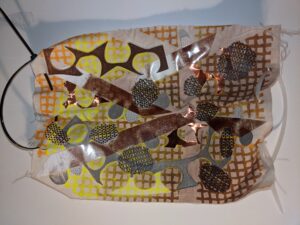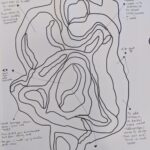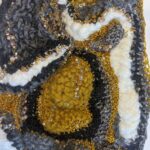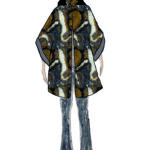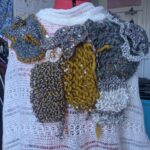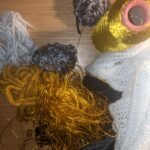Here, I developed some final samples looking more at fitting around parts of the body and covering or protecting areas, like a bandage or wound covering would. I used the materials in the materials pack to inspire some initial ideas on how I could attach material to the body or create straps and fastenings. Not only does the sample below react to heat when on the arm, by creating a new, bright colour on the surface, it fits round alike to the slime mould. As you can see, the material is quite flexible, despite the structural elements overlaying it. This contrasts the flexibility of the material to bend, flex and stretch over the body. I used natural dyeing processes with nettles to dye this fabric. Although the colour is not immense, the antibacterial and aromatic qualities of using a natural dye was worth mentioning. In addition, by using natural processes, this reduced the chances of harmful chemicals being used in the production processes of the fibre and the dye colour.

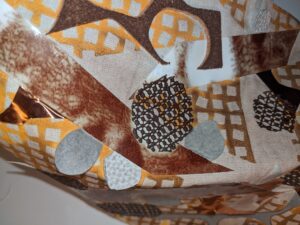
I have also worked onto the surface of the bandage/support to add an aesthetic element to the sample. Inspired by how light and heat can change the surface and colour of snakeskin and chameleon skins, I experimented with how I could use metal to reflect light, and colour in reaction to heat.
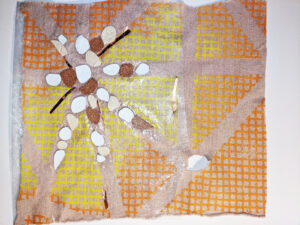
Below, I have shown the reaction comparison of when the fabric is hot to as when it is cold. Although not technically within our colour palette, the bright yellow does serve a purpose in my designs. From the muted orange colour, the heat applied to the print creates this bright yellow colour which, not only links back to my theme when looking at slime mold which has a similar vibrant colour, but also, the neon quality of the colour could be of use in a medical sense. Perhaps the sudden change to a bright yellow could alert someone of something overheating, or be an indication to seek further medical advise if a wound or burn becomes infected, indicated by the fact that it is giving off more heat and therefore creating the colour change on the bandage.
